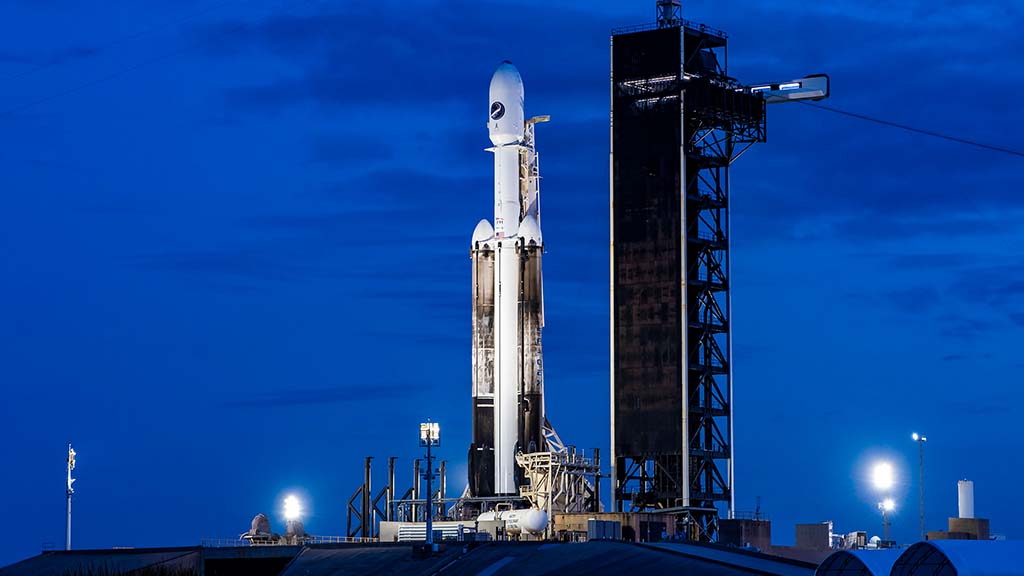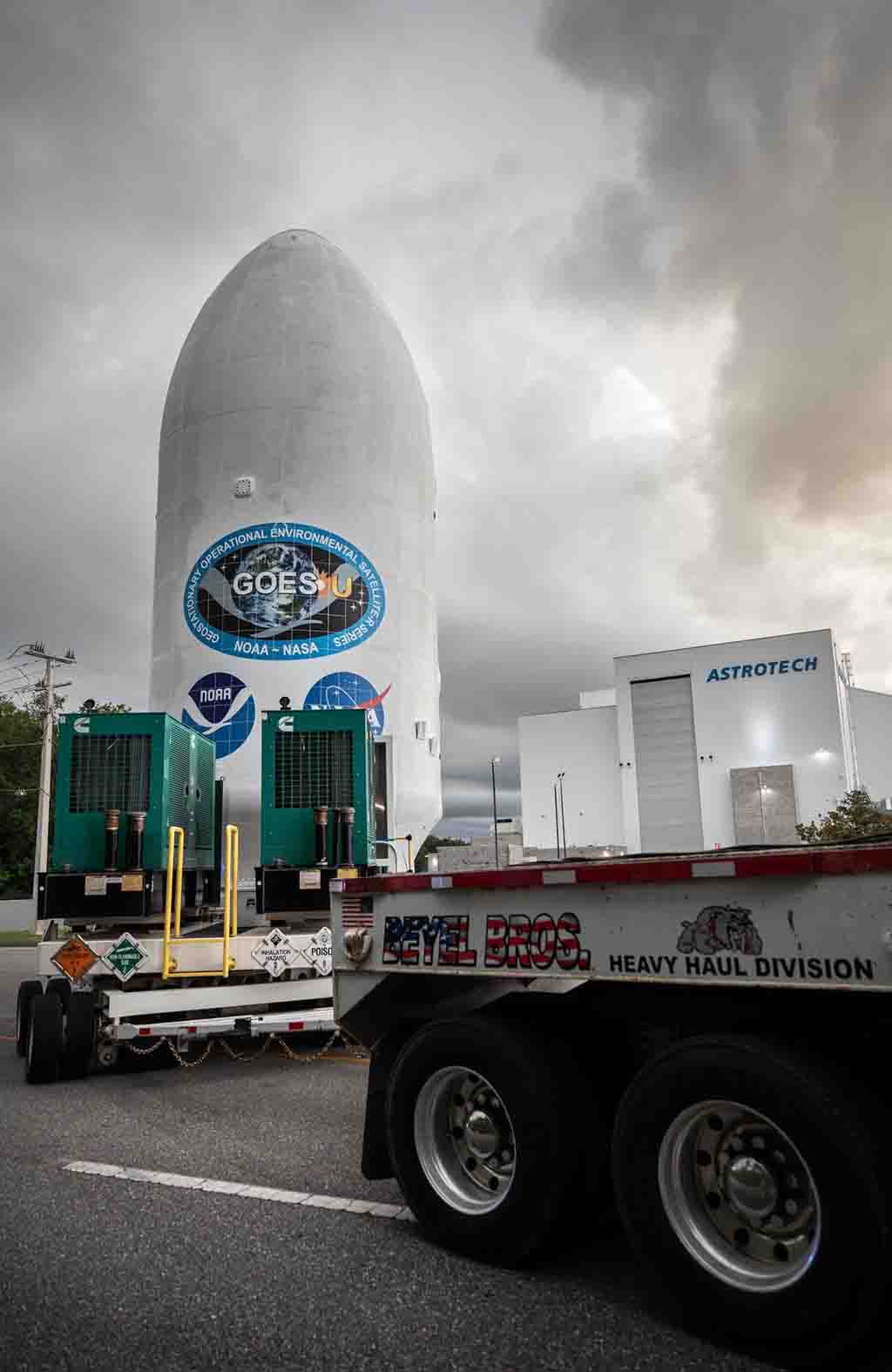SpaceX
SpaceX Falcon Heavy ready to launch GOES-U mission next week

SpaceX Falcon Heavy rocket is returning next week for a NASA mission to deliver Geostationary Operational Environmental Satellite U (GOES-U) to Earth’s orbit. The new launch comes six months after the USSF-52 mission in December.
NASA targeting a two-hour launch window opening at 5:16 p.m. EDT on June 25 from Launch Complex 39A at Kennedy Space Center in Florida. Once separated, the spacecraft will be en route to a three-week-long journey in geostationary orbit 22,236 miles above the equator.
In the meantime, the GOES-U payload has completed several milestones to achieve liftoff eligibility. On June 10, Astrotech Space Operations facility technicians lifted the GOES-U satellite onto the payload adapter and the payload attach fitting. It enabled the spacecraft to attach to the top of the Falcon Heavy space vehicle.
The engineers then fueled the spacecraft with 5,000 pounds of hyperbolic propellant and oxidizer. These will be used to provide it with thrust in orbit leading the overall satellite weight to 10,956 pounds. On June 13, the 20-foot satellite encapsulated inside two payload fairings halves.
These fairing halves protect the GOES-U satellite during maximum dynamic pressure and ascent heat. The halves will detach and return to Earth for reusability. On June 15, the team transported the payload from the Astrotech facility to Falcon Heavy’s hanger.

Crews transport GOES-U from the Astrotech Space Operations facility to the SpaceX hangar at Launch Complex 39A at NASA’s Kennedy Space Center in Florida (Image Source – NASA)
Up next, the teams will connect GOES-U to the SpaceX Falcon Heavy rocket before it rolls out the assembled ship to the launch pad.
NASA GOES
These satellites are designed to provide advanced imagery and atmospheric measurements of Earth’s Western Hemisphere. The spacecraft conducts real-time mapping of lightning, solar activity, and space weather monitoring.
Its orbit class enables it to maintain positions over specific geographic regions to provide continued coverage of that area over time.
The first GOES-R satellite launched in 2016 is known as GOES EAST Satellite. The GOES-S satellite launched in 2018 serves as an on-orbit backup. Goes-T deployed in 022 as an operational GOES WEST satellite. The upcoming GOES-U will be the fourth and final satellite in the GOES series.
(source)












